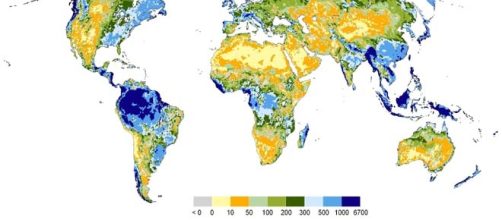Water is an essential element that all living things must have to survive, and for the first time ever, a groundwater map has been created that shows all the world’s groundwater. Groundwater is water that is hidden in the Earth’s crust that was created by rain and other water sources and then got absorbed into the ground, where it remains until pumped out and used for drinking, watering crops, etc.
During the 1970s, scientists estimated the amount of groundwater, but until now we didn’t have a groundwater map showing all of the water stored beneath the Earth’s crust.
A study published in Natural Geoscience shows a new groundwater map estimating the amount of groundwater that has added tens of thousands of data points to the equation. This study not only measured the water, it studied its age, amount of time it had been underground, and other factors.
Groundwater map shows areas of renewable, stagnant waters
According to Tom Gleeson, hydrogeologist at the University of Victoria in Canada, who was the study leader, the map and estimates reveal where the groundwater is stagnant and non-renewable, as well as areas where the water is being renewed quickly.
The study revealed that the Earth’s crust holds six quintillion gallons of groundwater in its top 1.2 miles, and if it could be all pumped out at once it would cover the continents, and be 600 feet deep.
This number was determined by using a computer model that accounted for 40,000 distinct measurements of the amount of water capable of being stored in different kinds of rocks all over the globe.
Scientists found out the age of Earth’s groundwater
Scientists also wanted to know what quantity of this groundwater was less than 50 years old, as previous tests have shown that some of the Earth’s groundwater was millions or even billions of years old. This is vital data, as newer water is more renewable and is also more susceptible to contamination by industry or agriculture.
The age was determined by looking at the amount of tritium that was in the groundwater. Tritium is a radioactive isotope of hydrogen that showed up in high amounts in rain water about 50 years ago because of above-ground thermonuclear testing.
The scientists discovered 3,700 tritium measurements of groundwater from 55 countries, and this showed that their new groundwater map will reveal that less than six percent of the Earth’s groundwater is less than 50 years old.

